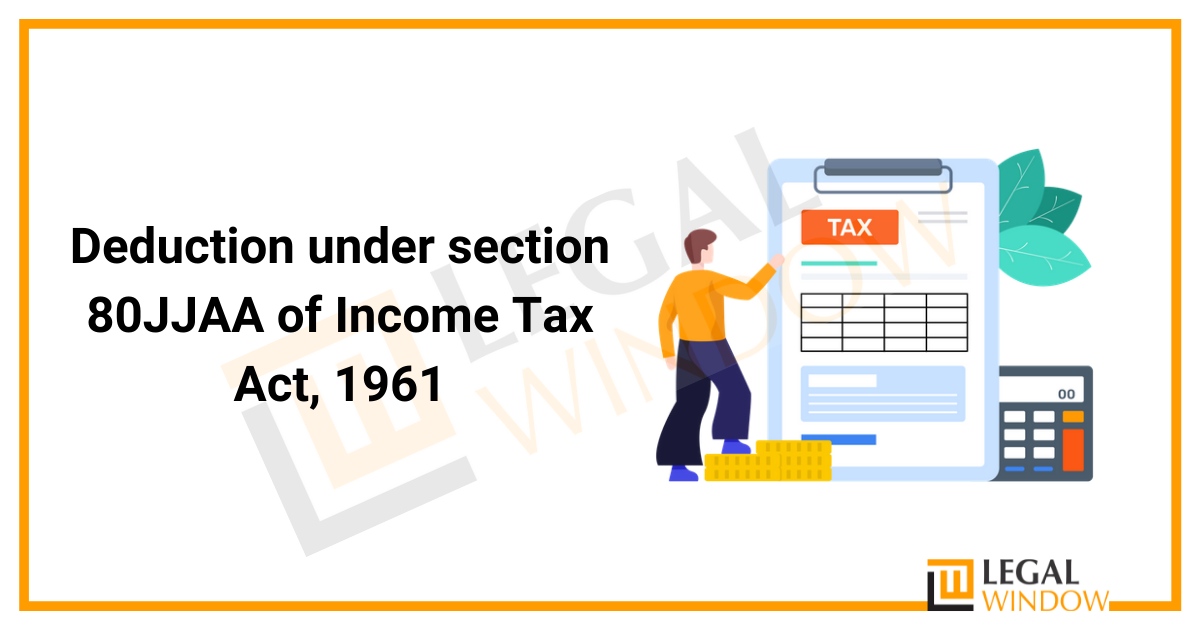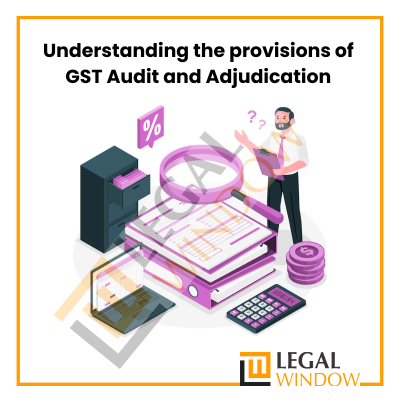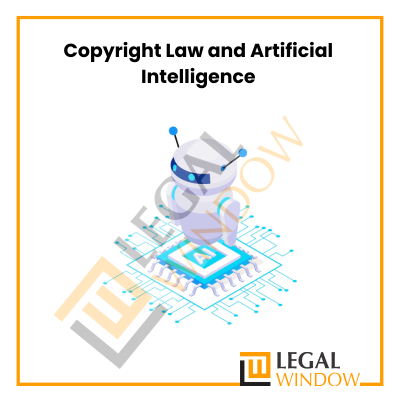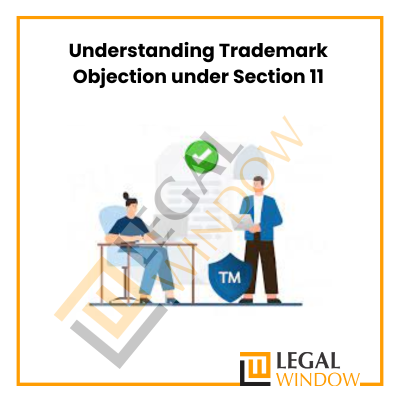
Government has been announcing and providing many reliefs to the new as well as existing entrepreneurs in many ways. Be it cheaper and easy loans, various incentives, easy compliances and relief under tax also. The aim of extending such facilities is to encourage and motivate entrepreneurs to start or expand their business. Giving incentives to the business entities not only boost the growth of economy but also create new employment opportunities in the country. So, to give an advantage to such entities, Section 80JJAA was introduced in Income Tax Act to provide relief to entities that have incurred expenses by way of additional employee costs during the previous year. Deduction u/s 80JJAA is available to new as well as existing entities, the main criteria is additional employee cost incurred. To understand details about deduction u/s Sec.80JJAA, read the below article for better understanding.
What is deduction u/s 80JJAA?
This deduction has seen various changes since its inception. This section was amended w.e.f 01.04.2017. Under this section, a deduction is allowed for 30% of additional employee cost incurred. This deduction is allowed for 3 consecutive assessment years starting from the year in which the employment is provided. This deduction is available to both new and existing business subject to certain terms and conditions.
Reading this much will lead to certain questions in your mind, as to
- What is meaning of word “additional”?
- What is the amount for calculation of 30%?
- Which all employees are to be considered?
- What are the entities eligible for claiming deduction?
Well, as we move forward, we will answer all these questions one by one. So, let us get started.
Terms and Conditions for claiming Deduction u/s 80JJAA
So as we can see 30% of the additional employee cost is being allowed as a deduction without any capping/threshold limit, so it is obvious that to give this benefit government is taking a huge hit on their tax revenue. So to ensure that this effort does not get wasted by misuse of the provision, the provisions of the section lays certain terms and conditions. First of all, let us understand the terminology used in the section.
Important Terms
- Additional Employee– These are the employees who have been appointed during the previous year and as a result of their appointment, total number of employees is increased. To understand it better we can take an example.
Particulars Case1 Case2 Case3 Existing Employees 10 10 10 New recruitees 5 5 5 Employees left during FY (3) (5) (6) Total No of Employees 12 10 9 As we can see, that only in Case1 total number of employees have increased. So, only in Case1, employer can claim the deduction if other conditions are satisfied.
- Emoluments– Now, to calculate the amount of deduction we need a base amount. As per Sec-80JJAA, any amount of sum paid/payable to these employees will be taken for the purpose of emoluments. except for the following sums
- Any contribution to a pension fund or provident fund as required by a statutory law.
- Any sum payable as retirement benefits e.g., leave encashment, gratuity, ex-gratia payments, commutation of pension etc.
- Additional Employee Cost- The product of above two terms, i.e., Additional Employee X Emoluments, will be the additional employee cost. If any sum is paid any mode other than account payee cheque/draft or online bank transfer will not be eligible for deduction under this section.
Conditions for the entity claiming deduction
An entity who wishes to claim Deduction u/s 80JJAA, should satisfy following conditions-
- The entity should have income under the head Profits and Gains from Business.*(Profession is not included)
- The entity should be eligible for Tax Audit under section 44AB.
- The entity should not have been formed by split, restructure of any existing business.
- The entity should not be result of a business reorganization.
- However, where the business is revived after a natural calamity, war, civil disturbance, accidental fire/explosion, then such revival will not be taken as split, restructure, reorganization as mentioned above. That is such entity will be eligible to claim the deduction u/s 80JJAA.
- The business entity should file Form-10DA with its return of income.
Category of employees covered
Just like employer, there are certain conditions for category of employees covered under this section-
- The salary of the employees should be less than Rs.25000 p.m.
- The employee should be participating in a recognized provident fund.
- The service period of the employee should not be less than 240 days during the previous year.
- Any employee for whom the entire contribution under any employee pension scheme is paid by government will not be considered for the purpose of calculating additional employees.
How to calculate the amount of deduction?
As discussed above the amount of deduction will be calculated on product of – No. of additional employees X Emoluments of additional employees. For better understanding let us take an example-
Example:
A businessman hires 5 additional staff on 01.06.2019, on a salary of Rs.11000/- p.m. The breakup of salary is as follows-
Basic- Rs.8000
HRA- Rs.2000
PF contribution- Rs.1000
Case 1- Businessman is a new entity and all 5 employees are first hires of the company.
Case 2- Businessman is an existing entity, with existing employees-10, New Recuitees-5, People leaving the company-3.
Calculation
Now in both the cases, Employee salary is less than Rs.25000/- p.m. As employees were hired on 01.06.2021, they have completed more than 240 days in the Financial Year. Also the employee is covered under Recognised Provident Fund.
As all the above conditions are satisfied the calculation will be as follows:-
Case1-
As the business is new,
Additional employees-5
Emoluments- Basic+ HRA (PF contribution cannot be taken) – Rs.10,000/- per month
Additional Employee Cost= 10000X5X10 months= Rs.5,00,000/-
Deduction u/s 80JJAA= 30% of Rs.5,00,000/- i.e. Rs.1,50,000/-
This deduction can be claimed for Previous Year- 2019-2020, 2020-2021 and 2021-22.
Case2-
As the business is already existing
Additional Employees= Existing Employees+ New Recruitees- Employees left during the year
=10+5-3=12
Now the increase in total number of employees will be only 2.
Emoluments= Rs.10,000/- per month(same as discussed in Case-1)
Additional Cost of Employee= 10,000 X 2X 10 months= Rs.2,00,000
Deduction u/s 80JJAA = 30% of Rs.2,00,000/- i.e. Rs.60,000/-
This deduction can be claimed for Previous Year- 2019-2020, 2020-2021and 2021-22.
Some Important Points
- Any increment, bonus etc. given to existing employees will not be additional employee cost if total number of employees do not increase.
- The additional employee cost will be nil, i.e. deduction cannot be claimed if total number of employees does not increase.
- In case an employee completes, less than 240 days during the year of recruitment then the deduction can be claimed in next financial year if he continues for more than 240 days during that year.
- In case of change in salary, average monthly salary can be considered.
- A professional, is not eligible to claim this deduction.
- Even if salary is not paid for a certain month, same will be taken for calculation of emoluments as payable is also covered in the section.
- The calculation for deduction will be done every year and in a particular year, 3 years deduction will be claimed, i.e. in FY-2021-22(AY-2022-2023), a person will claim
- 3rd instalment of deduction for 2019-20
- 2nd instalment of deduction for 2020-21
- 1st instalment of deduction for 2021-22
Why you need a CA to claim this deduction?
As discussed above, the person who can claim this deduction should be eligible for tax audit. So first of all, we need a CA for the tax audit. You can consult Legal Window for the tax audit. Second is the condition for filing Form-10DA.
Now, Form 10-DA is required to be furnished along with return of income. The form should be duly signed by a chartered accountant. The contents of the form are-
- A report with details like name of the party, nature of business, amount of deduction claimed, assessment year for which deduction is claimed.
- CA needs to provide his membership number also.
- Further, an annexure needs to be filled, where all the details about employees, employee cost are to be filled.
- In the annexure, different columns are there for existing business and new business.
- The amount of deduction should be specified for all the three years that is being claimed in the current assessment year.
So the reality is, a professional who himself is not eligible to claim the deduction u/s 80JJAA can help you claim this deduction.
Section 80JJAA: Why still an unpopular deduction?
Section 80JJAA, gives a deduction for amount of 30% of additional employee cost, but still this deduction is not most commonly used and is not so popular. The reasons for the same are some ambiguity about term and conditions and their real life applicability. For instance following issues remain unresolved-
- During a year, many employees can come and leave. And out of those whose salary should be considered as additional employee cost.
- If an employee leaves in the second year, then can the deduction in his respect still be claimed as there is no cost being incurred for him now?
- Does the applicability of tax audit needs to be there for all the 3 years?
- Professionals are not included for this deduction.
- In case of new business, if business itself is setup for less than 240 days, then in first year no deduction can be claimed.
- If an employee’s salary was less than Rs.25,000/- in first year and increases thereafter can deduction be claimed in his respect in upcoming years.
A Brief Sum up
To sum up, it can be said that Deduction u/s 80JJAA is a good option to save taxes as there is no upper capping/threshold as in case of deduction like Sec80C.This section provides incentive/ benefit to business units who are doing employment generation, which is helping people with low income range i.e. why limit is kept up to Rs.25,000/-. However, there is complexity in calculation and interpretation of Sec.80JJAA in practical scenario as in practical life things are not this simplified. However, to avail benefit of this section please get in touch with your consultant and we are sure you can make best out of it.
CA Pulkit Goyal, is a fellow member of the Institute of Chartered Accountants of India (ICAI) having 10 years of experience in the profession of Chartered Accountancy and thorough understanding of the corporate as well as non-corporate entities taxation system. His core area of practice is foreign company taxation which has given him an edge in analytical thinking & executing assignments with a unique perspective. He has worked as a consultant with professionally managed corporates. He has experience of writing in different areas and keep at pace with the latest changes and analyze the different implications of various provisions of the act.
Categories
- Agreement Drafting (23)
- Annual Compliance (11)
- Change in Business (36)
- Company Law (147)
- Compliance (89)
- Digital Banking (3)
- Drug License (3)
- FEMA (17)
- Finance Company (42)
- Foreign Taxation (6)
- FSSAI License/Registration (14)
- GST (118)
- Hallmark Registration (1)
- Income Tax (199)
- Latest News (34)
- Miscellaneous (164)
- NBFC Registration (8)
- NGO (14)
- SEBI Registration (6)
- Section 8 Company (7)
- Start and manage a business (20)
- Startup/ Registration (126)
- Trademark Registration/IPR (40)
Recent Posts
- Maximise Your Tax Savings: Power of Form 12BB April 23, 2024
- Cryptocurrency startups and Regulatory compliance April 22, 2024
- Understanding the provisions of GST Audit and Adjudication April 20, 2024
About us
LegalWindow.in is a professional technology driven platform of multidisciplined experts like CA/CS/Lawyers spanning with an aim to provide concrete solution to individuals, start-ups and other business organisation by maximising their growth at an affordable cost.








